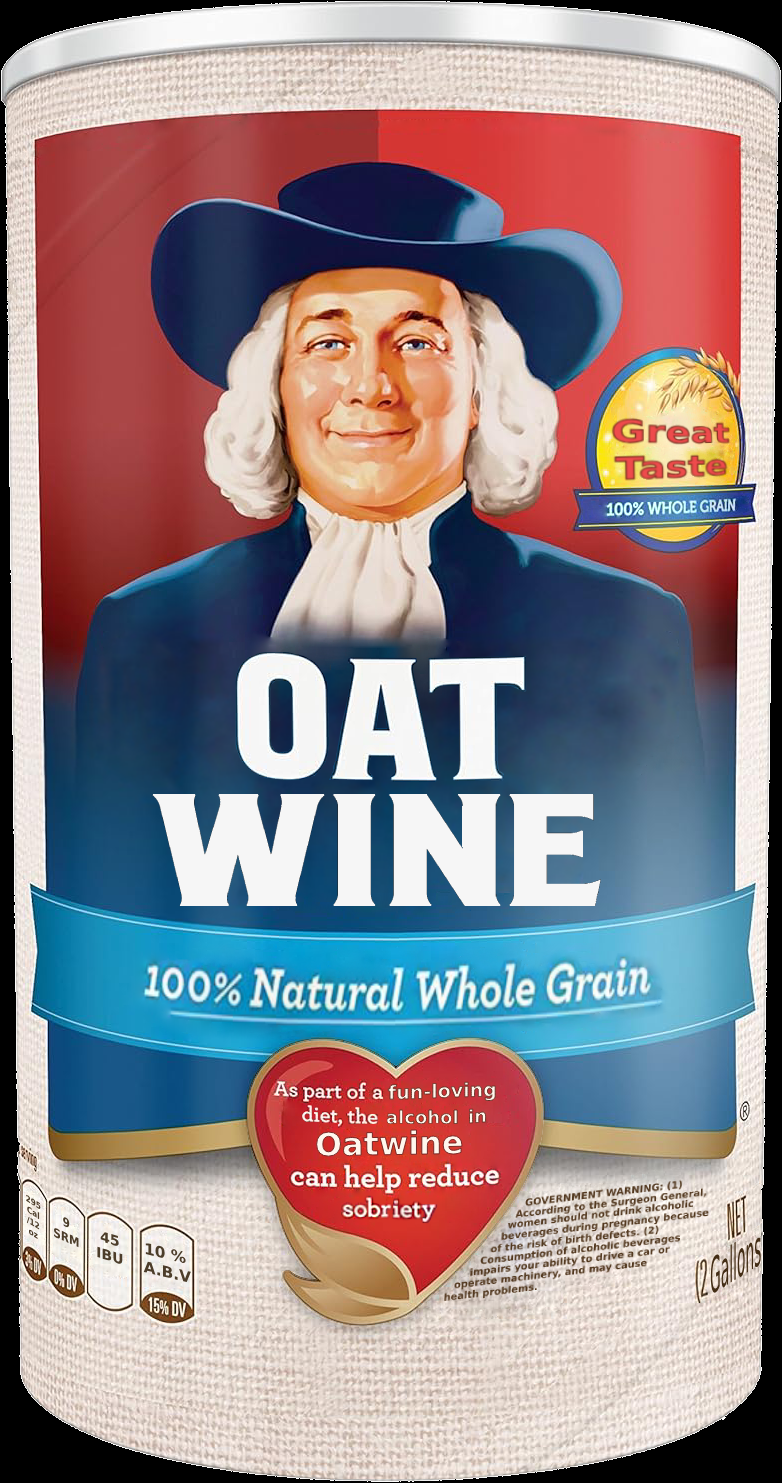- 31 Posts
- 129 Comments

 6·10 months ago
6·10 months agoI usually use 88% Lactic Acid. As a second choice I would pick Phosphoric Acid (usually comes as 10%). If you can find a stronger phosphoric acid then it’s probably the better choice as I think it has a lower taste threshold than lactic but it’s really fairly negligible between the 2. Citric acid has an extremely noticeable taste (think sour candy like warheads) and carbonic acid is a weak acid which is usually found in beer as the result of dissolved CO2.

 1·10 months ago
1·10 months agoHow does she feel about “The return of the son of monster magnet”

 1·10 months ago
1·10 months agoBoo. No Kraftwerk 1 or 2.
Dead Branch is a relic that gives you a random card every time a card is exhausted. Shivs exhaust when you play them so if you have a Blade Dance or 2 (especially if you can upgrade them) you can generate several random cards every turn. Some of these randomly generated cards might also be 0 cost or will exhaust also when they are played which generates more random cards. Basically a Dead Branch run is where you lean in to playing as many exhaustable cards as you can and just seeing what happens. It’s inherently an impossible run to utilise a consistent strategy for because the cards you get every fight are always different. This particular run I was lucky that I picked up a Lizard’s Tail relic (revives you to 50% HP when you die) as well as a Fairy in a Bottle (revives you to 30% HP when you die) so even if I happened to draw a useless set of cards via Dead Branch at a crucial turn, I was still somewhat safe from just being insta-killed.

 9·1 year ago
9·1 year agoYes. You can mash (as in enzymatically convert starches to sugars, not as in mashed-potatoes) any gourd (think pumpkin, squash, potatoes, sweet potatoes). They tend not to add too much noticeable flavor to a beer (just a general earthiness and some color contribution) so it’s often recommended to oven roast them a little first to get some caramelization. Here is a recipe that uses sweet potatoes.
 35·1 year ago
35·1 year ago“I’d hit him right in that fake nose. He’d have plastic lying all over the floor,” Trump said, while standing there with lifts in his shoes, five different hair transplants, a girdle, and three layers of bronzer makeup.

 3·1 year ago
3·1 year agoSuch a great album opener. I love when people are hearing it for the first time and turn up the volume to hear the intro better and then, well, you know…

 2·1 year ago
2·1 year ago[posted this as a top level reply by mistake at first]
I’ve never played the board game because a) it’s pretty pricey and b) I don’t have a consistent group to play it with. I also do love digital adaptations of epic board games because it makes managing turns, cards, health etc way easier. That being said, this port of Gloomhaven is clearly very taxing on the aged hardware of the switch. I’m sure the PC version of the digital adaption runs better/faster/prettier etc. I’ve been playing by myself and despite all my complaints about the switch version, still thoroughly enjoying it.

 1·1 year ago
1·1 year agodeleted by creator

 2·1 year ago
2·1 year agoI've been obsessed with gloomhaven since it was released on the switch. Sure it has a lot of UI issues and absolutely devours my switch's battery life but it really scratches a heavy strategy itch in my brain. It is a very difficult game but with every failed "run" you keep all the gold and experience you gained so even failing a scenario helps progress you towards leveling up and being able to buy new items to help you in future endeavors. Every win I have eked out has felt really hard won and rewarding because of that.

 4·1 year ago
4·1 year agoSettings are saved automatically. Maybe force close app, clear cache (not data!) and reload?

 4·1 year ago
4·1 year agoSo I have previously posted about the two (!) brewdays I had for my entry (a 10+% A.B.V. Oat-Wine) to my Homebrew Club’s annual fundraising event, Brewminaries Present: Cornucopia. Batch 1 accidentally shot up to 89°F overnight but instead of just dumping it, I decided to let it ride to see if it was salvageable and brewed again (batch 2) with a different yeast and an insulated jacket I could add ice packs to. Well batch 1 was still tasting super hot a few weeks into “conditioning” so I decided to throw in a pack of Omega Yeast Brett Blend 3 and just see what happened whilst I added some Biofine to batch 2 and let it cold condition in the keg. The event is still a few weeks away so hopefully batch 1 develops some funk before then and I can serve it alongside batch 2 which I’m actually happy with how it turned out. Regardless, If you are around in NYC on October 14th and want to try this beer (and many many more) come buy tickets to the event!

 2·1 year ago
2·1 year agoI’ll make another post in the community for more visibility, but here is the ticket link for the event. It’s going to be on Saturday, October 14th from 1-5PM at the Brooklyn Navy Yard Building 77.

 7·1 year ago
7·1 year ago- Southern Oregon
- Northeastern California
- Northern Nevada
- Southern Utah
- Southwest Colorado
- Northeastern Arizona
- New Mexico
- Texas
I would say the reason something like TOSNA goes against the manufacturer’s directions is because the manufacturer just provide a “generic” usage recommendation (e.g. 1.5g per gallon or 1/2 tsp per gallon) when they amount you use should absolutely be customized to the batch you are making. I would argue that the most important part of TOSNA isn’t the fact that the nitrogen sources are “Organic” (although I do firmly believe that organic nitrogen sources (i.e from dead yeast cells) that do not contain DAP lead to fewer temperature spikes from rapid fermentation and therefore produce far fewer fusel alcohols and therefore require less aging time to “mellow”), but that it is the fact that it is a “Tailored” protocol, taking into consideration not only the total volume of must, but the gravity of that must, the nitrogen requirements of the yeast being used for the fermentation, whether there is fruit being added which would reduce the extraneous nitrogen required to be added for healthy fermentation etc.
I would guess YAN is more important because what’s the point of having free nitrogen if the yeast can’t actually utilise it.
I’ve never done experiments between SNA and front loading all the nutrients. I don’t find the staggered additions difficult to do or a burden and I’m typically degassing/oxygenating anyway for the first few days. Plus it gives me an opportunity to take samples and see how fermentation is progressing.
Sure it’s technically more work than the one and done method of front loading but not enough of an added burden that it’s too much effort to bother.
I don’t often use nutrients when I’m brewing beer unless I’m making a big beer (>8% A.B.V.) and I want to ensure a nice healthy fermentation. I do however use nutrients every single time I make cider/wine/mead since the fermentables here do not provide enough FAN (Free Amino Nitrogen) and so without them fermentation is sluggish, throws off a ton of sulfur and often requires a long conditioning/aging time to get to a point where I would want to drink it.
As for the actual nutrients I use, for beers I will use Wyeast Beer Nutrient Blend and for mead I rehydrate dry yeast with Go-Ferm and do a Staggered Nutrient Addition of Fermaid O over the first 4 days of fermentation along with oxygenating/degassing with pure O2 through a sintered stone.

 31·1 year ago
31·1 year ago!homebrewing@sopuli.xyz is probably the community I’m most active in. It’s a welcoming community for anyone who brews their own alcohol (mainly beer focused I would say but some people have made mead and other wines).












So black teas are a very common thing to add to meads as they contribute tannins which can help with mouthfeel and balancing acidity of the final beverage. This tea in particular (Lapsang Souchong) is a smoked tea and so as well as adding tannins to the mead, also contributes as wonderful smokey flavour. My inspiration for this mead several years ago was to make something that had a similar flavour profile to a nice peated scotch. The maple syrup was allowed to fully ferment out to leave just a subtle woody-ness and it works in conjunction with the tea and oak spirals I aged the mead on to provide a pseudo-barrel aged taste to the final product.